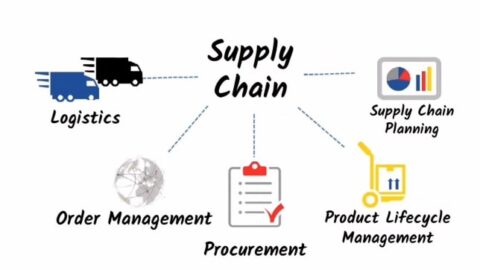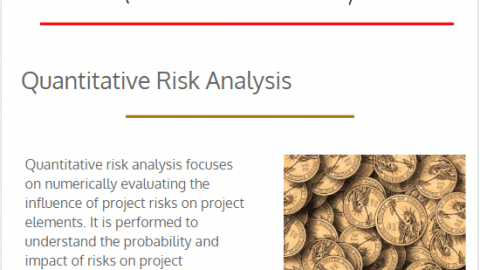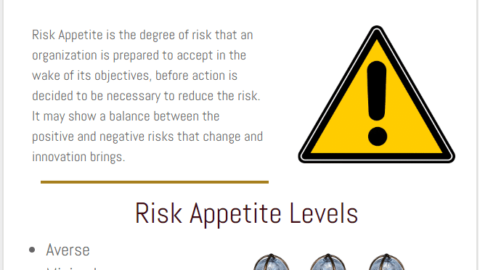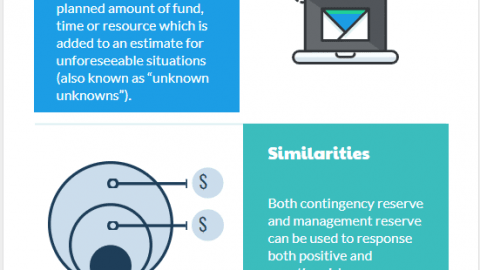Financial Risk Management: From Novice to Ninja
In the volatile landscape of finance, understanding Financial Risk Management is not just a requirement; it’s an essential survival skill. With the myriad risks linked to investments, market trends, and operational factors, everyone from individual investors to large corporations needs to be well-versed in mitigating risks. In this comprehensive blog post, we’ll take you through a journey from understanding the ABCs of risk to mastering advanced strategies. Buckle up; it’s going to be an enlightening ride!
Table of Contents
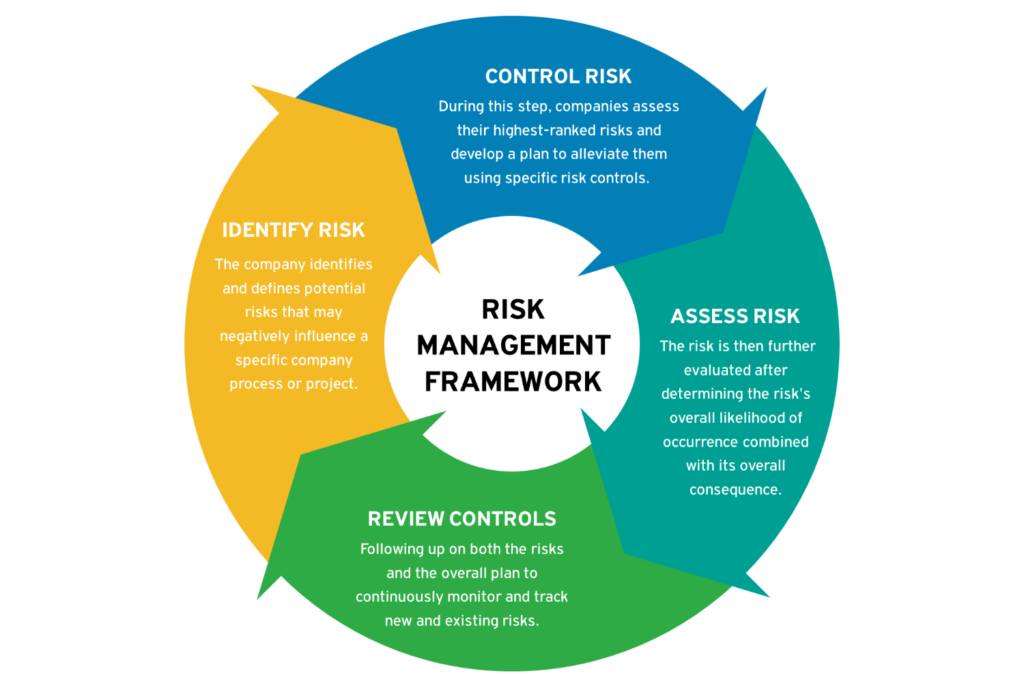
Financial Risk Management
1. Understanding the ABCs of Financial Risk Management
What Is Financial Risk?
Financial Risk is the potential for loss that comes from various market forces or internal failures. This can apply to individuals, small businesses, or even large multinational corporations. The financial market’s unpredictable nature can jeopardize investments and operational stability if not adequately managed.
Types of Financial Risks
- Market Risk: For example, if you invest in stocks and the stock market crashes, you could lose a significant portion of your investment.
- Credit Risk: Let’s say you lend money to a friend, and they fail to pay it back. That’s credit risk in simple terms.
- Operational Risk: Imagine if your business’s central database is hacked. The resultant damage falls under operational risk.
- Liquidity Risk: If you need to pull your money out of a long-term investment to cover an emergency but find that you can’t do so without massive financial penalties—that’s liquidity risk.
Risk Identification and Management Plan: A proactive approach to spotting potential risk factors and crafting effective strategies to mitigate them is essential. You’ll need to go through the stages of risk identification, risk assessment, and risk mitigation.
Key Tools: Budgets, forecasts, and insurance can help you manage these risks at the basic level. For instance, keeping a well-organized budget can help you navigate through market fluctuations and liquidity constraints.
2. Intermediate Tips: Scaling Up Your Risk Management
Quantifying Risks
- Value at Risk (VaR): It calculates the maximum potential loss an investment portfolio could face over a specified period.
- Stress Testing: For example, simulate scenarios where interest rates rise dramatically or a critical supplier goes bankrupt to understand the impacts.
- Sensitivity Analysis: If you own stocks in the tech industry, how sensitive are your investments to changes in tech regulations?
Risk Management Software and Regulations
Risk Management Software like RiskMetrics or SAP can help you manage more complex risk factors effectively. Also, in the corporate world, understanding regulatory frameworks like Basel III, the Sarbanes-Oxley Act, or Dodd-Frank is essential for compliance and effective risk management.
Risk Reporting
Regular Reporting: Develop internal risk reports that update stakeholders about the risk profile of the business or investment portfolio.
3. Advanced Strategies: Becoming a Maestro in Managing Risks
Sophisticated Risk Modeling Techniques
- Monte Carlo Simulation: This statistical method allows you to account for risk in quantitative analysis and decision-making. For example, investment managers often use Monte Carlo simulations to estimate the future performance of a portfolio by considering numerous possible economic scenarios.
- Copulas: This advanced mathematical function is used to couple multiple distributions together, making it easier to understand the correlation between different types of risks. For example, during the 2008 financial crisis, copulas were used to understand how market risk could lead to increased credit risk.
Risk Transfer Mechanisms and Hedging Tactics
- Risk Transfer: One common mechanism is the Credit Default Swap, which can transfer the risk of a fixed-income product to another party. For instance, if you hold a lot of corporate bonds, a credit default swap would compensate you in case of a default, thereby transferring the risk to the issuer of the swap.
- Hedging: Financial derivatives like options and futures are advanced tools used to offset potential losses or gains that may be incurred by a companion investment. For example, if you own shares in an oil company, you could buy a futures contract that profits when oil prices drop, thereby hedging your risk.
Enterprise Risk Management (ERM)
Enterprise Risk Management is like conducting an orchestra; all instruments (risks) must be in tune for a symphony (business) to be harmonious. ERM integrates risk considerations into every decision and process throughout the organization. Coca-Cola, for instance, uses ERM to balance commodity risks, operational risks, and even geopolitical risks across its international operations.
4. The Dawn of AI: The Future of Financial Risk Management
AI in Risk Assessment
Artificial Intelligence (AI) isn’t just a buzzword; it’s revolutionizing how we approach financial risk management. AI algorithms can scan through millions of data points from various sources like market trends, social media chatter, and geopolitical news to provide real-time risk assessments.
Machine Learning in Predictive Modeling
Machine Learning, a subset of AI, excels in predictive modeling. It can analyze past market trends and operational metrics to predict future risks. For example, machine learning algorithms can predict the likely success of a new product launch based on historical data, market sentiment, and competitive landscape.
AI-Driven Regulatory Compliance
Advanced AI tools are now capable of automating the complex process of regulatory compliance. Also, these tools are updated in real-time with changes to laws like Dodd-Frank, Basel III, or Sarbanes-Oxley, making it easier for organizations to stay compliant while focusing on their core business.
5. Insider Tips, Tricks, and Essential Practices
Never Ignore Risks
One of the key principles in risk management is that ignorance is not bliss. Failure to identify and address risks can have catastrophic consequences. For example, ignoring market trends could result in significant investment losses. Always conduct regular risk assessments to stay ahead of the curve.
Involve All Stakeholders
Risk management isn’t the sole responsibility of the CFO or the risk management department; it’s a company-wide endeavor. From top-level management to frontline employees, everyone should be educated and involved in the risk management process.
Start Small, Then Scale
Especially pertinent for beginners, it’s easy to get carried away with complex investment vehicles or intricate risk management software. However, the key is to start with basics, like a diversified portfolio of low-cost index funds for individual investors, or simple risk assessment tools for small businesses. Once you’re comfortable, you can consider scaling to more complex investments or tools.
By effectively implementing these advanced strategies and staying updated with future trends like AI, you’re not just surviving the financial battlefield; you’re mastering it. Also, these tips and tricks are not just best practices; consider them your arsenal in conquering the ever-volatile realm of finance.
6. Staying Agile: The Importance of Continuous Monitoring and Adaptation
Real-time Risk Monitoring
In the world of finance, change is the only constant. Traditional risk assessments, performed quarterly or annually, may not capture the rapid changes in market conditions. That’s where real-time monitoring comes into play. Also, advanced systems and software can continually monitor multiple risk vectors and alert you the moment something changes. For example, if a significant news event causes a sharp drop in stock prices, real-time monitoring systems would flag this change instantly, allowing you to take corrective measures.
Adapting to New Risks
The financial landscape is ever-changing, introducing new forms of risks that might not have existed before. Whether it’s a new type of investment vehicle or a regulatory change, the key is to be adaptable. Also, companies like Airbnb or Uber had to consider new forms of risks that traditional taxi or hotel companies never faced, like the risk of a host’s home being vandalized or the legal risks associated with ride-sharing.
Implementing Feedback Loops
Use feedback loops in financial risk management. These loops collect ongoing data. They track the success of your risk strategies. If a strategy fails, the feedback loop tells you why. Then, you can make timely improvements.
8. Financial Risk Management for Startups: Agile and Essential Approaches
Assess Early and Often
Startups are unique. They change fast. Risk assessments should happen often, not just at the beginning. For example, if you pivot your business model, reassess your financial risks immediately.
Bootstrapping? Manage Cash Flow
Many startups bootstrap. This means cash flow is king. Understanding liquidity risk is crucial. For example, even if you have high sales, late payments from customers could create cash flow issues.
Fundraising? Watch out for Dilution
Startups often seek investors. But investments can lead to ownership dilution. Know this risk. Plan your fundraising carefully. For example, opt for convertible notes to delay valuation and reduce dilution risk.
Use Simple Tools, Then Scale
Startups usually start small. Use simple, cost-effective risk management tools at first. As you grow, upgrade to advanced software like SAP for risk management or even machine learning algorithms for real-time analytics.
Cybersecurity is a Must
Startups are digital. This makes cybersecurity vital. Even a minor hack can be fatal. Take cybersecurity seriously from day one. Use strong encryption and multi-factor authentication, for example.
Regulatory Compliance
Don’t ignore regulations. Even small startups must comply with laws like GDPR for data protection. Non-compliance can lead to hefty fines and reputational damage.
By taking an agile, aware, and proactive approach, startups can manage financial risks effectively. This is essential for survival and long-term success.
Hello, I’m Cansu, a professional dedicated to creating Excel tutorials, specifically catering to the needs of B2B professionals. With a passion for data analysis and a deep understanding of Microsoft Excel, I have built a reputation for providing comprehensive and user-friendly tutorials that empower businesses to harness the full potential of this powerful software.
I have always been fascinated by the intricate world of numbers and the ability of Excel to transform raw data into meaningful insights. Throughout my career, I have honed my data manipulation, visualization, and automation skills, enabling me to streamline complex processes and drive efficiency in various industries.
As a B2B specialist, I recognize the unique challenges that professionals face when managing and analyzing large volumes of data. With this understanding, I create tutorials tailored to businesses’ specific needs, offering practical solutions to enhance productivity, improve decision-making, and optimize workflows.
My tutorials cover various topics, including advanced formulas and functions, data modeling, pivot tables, macros, and data visualization techniques. I strive to explain complex concepts in a clear and accessible manner, ensuring that even those with limited Excel experience can grasp the concepts and apply them effectively in their work.
In addition to my tutorial work, I actively engage with the Excel community through workshops, webinars, and online forums. I believe in the power of knowledge sharing and collaborative learning, and I am committed to helping professionals unlock their full potential by mastering Excel.
With a strong track record of success and a growing community of satisfied learners, I continue to expand my repertoire of Excel tutorials, keeping up with the latest advancements and features in the software. I aim to empower businesses with the skills and tools they need to thrive in today’s data-driven world.
Suppose you are a B2B professional looking to enhance your Excel skills or a business seeking to improve data management practices. In that case, I invite you to join me on this journey of exploration and mastery. Let’s unlock the true potential of Excel together!
https://www.linkedin.com/in/cansuaydinim/


